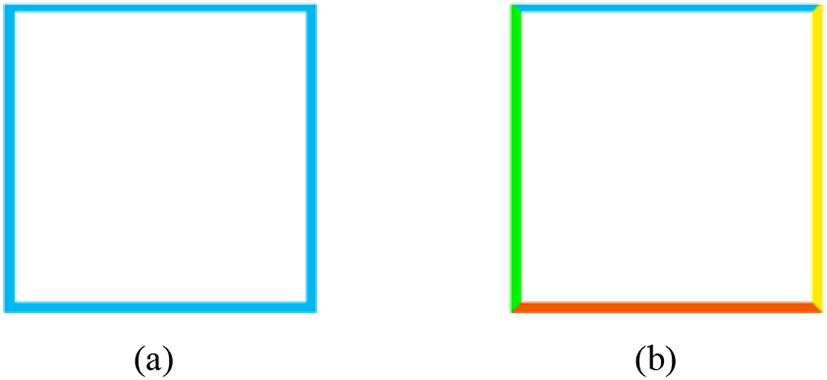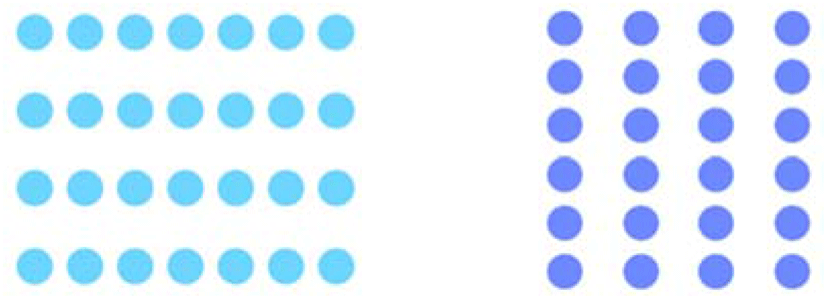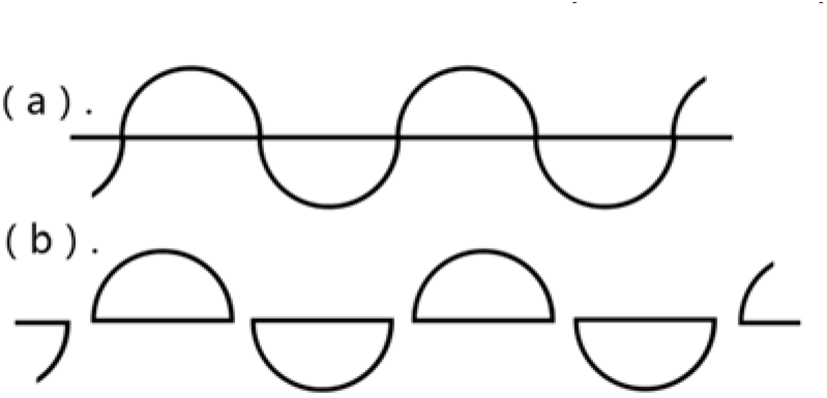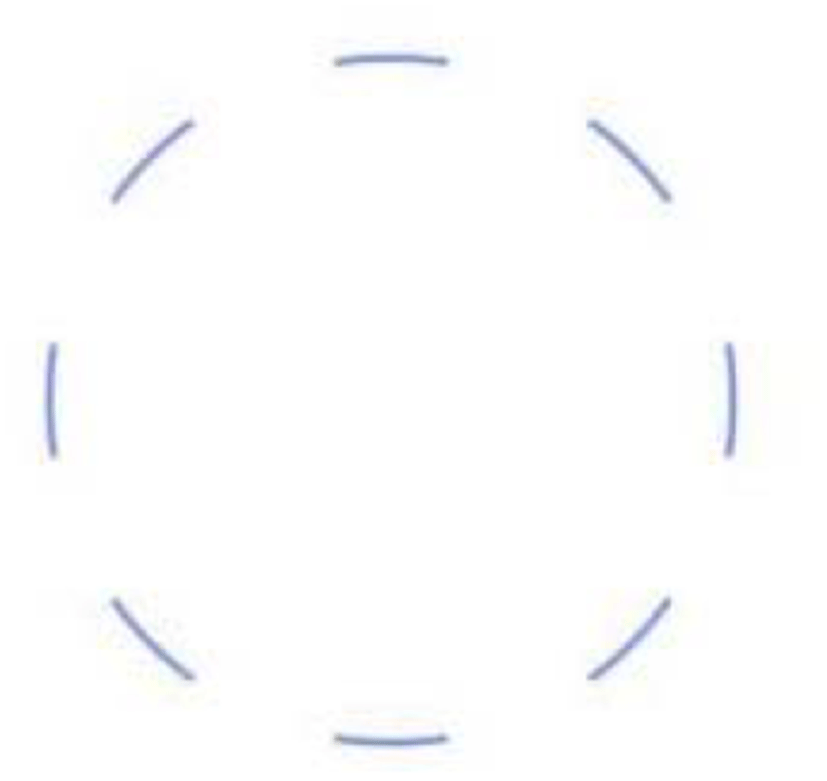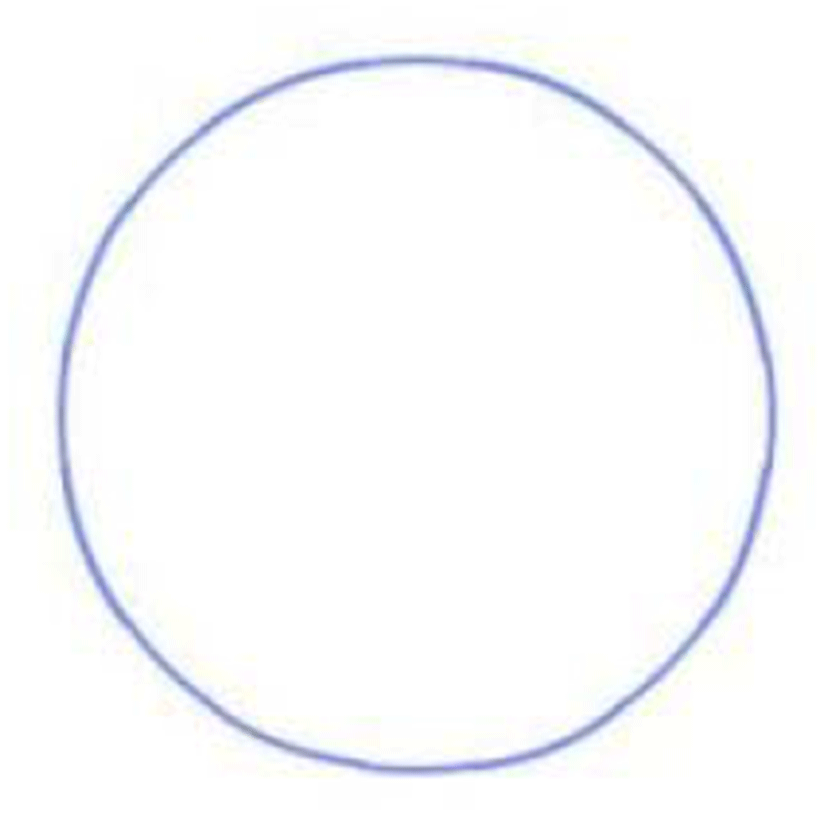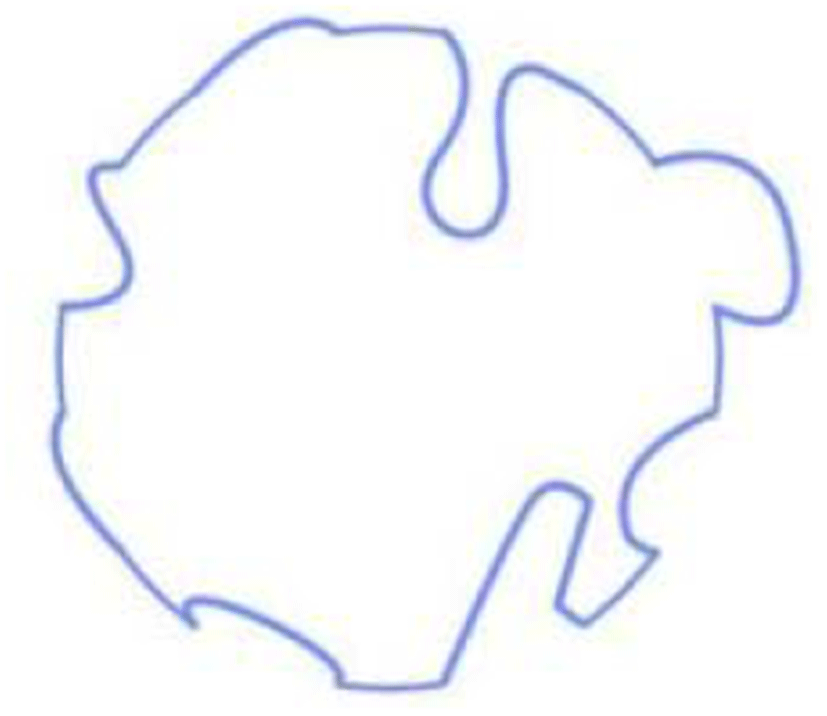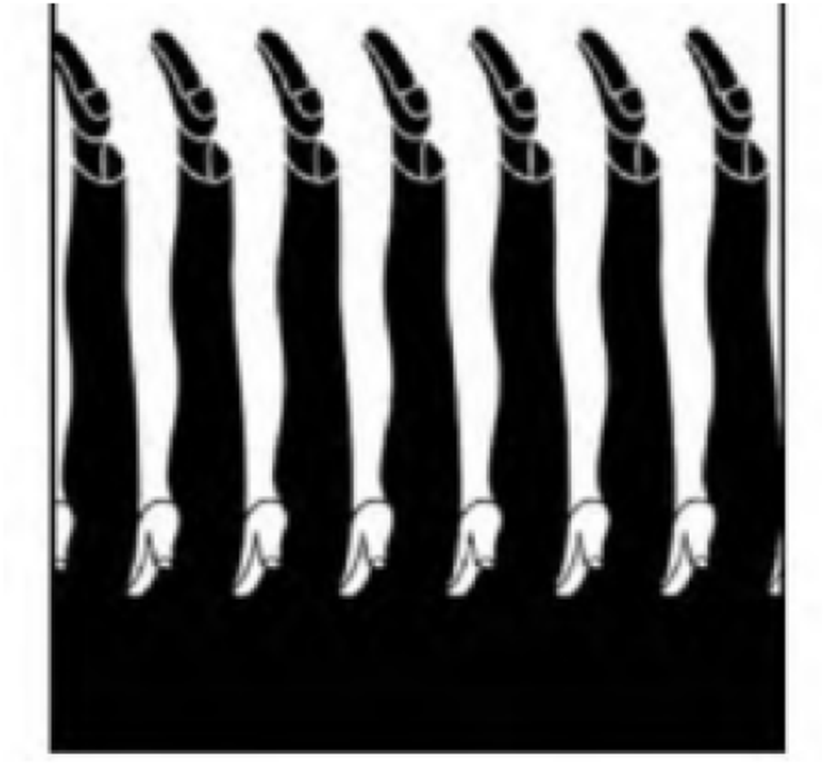I. INTRODUCTION
When we evaluate the formativeness of one object, there can be the differences in the thoughts of the individuals. However, such evaluation activities of the people can be separated into 2 phases. The first is recognition of things through human visual cognitive form or ability, and the second will include emotional cognitive processes that are conveyed to the brain by the perceived form and combined with other experiential values in the meantime. These mean that visual perception and innate direction or acquired sentiment work simultaneously. The Gestalt theories are, indeed, the psychologies. So, because, among the Gestalt theories, The Law of Grouping emphatically researches the visual recognitions, this theory had proceeded with a research together with the visual recognitions and the psychological emotions in a natural way. As a result, this thesis has the direct guidance significance in making The Law of Grouping a theoretical basis and in finding a method for heightening the formativeness of the 3D modeling object. Through a logical and theoretical analysis that the relationships between such the 3D Computer aided objects relocation method combined on surface and space are found out.
And, by analyzing a successful 3D modeling design again, how such a grouping law can be applied is studied. And, through a comparative analysis method, the visual points of strong and changes of The Law of Grouping in relation to the 3D model applications are analyzed. Lastly, in relation to The Law of Grouping, regarding the use of the 3D modeling is not only for the animations but also for the formal designs of the digital character, the expandability of the use of the 3D modeling is analyzed. The virtual 3D modeling among such objects and animations are different. Not only can they be seen, but also they can be touched and possess the certain, specific functions. So, when designing, not only are the visual pursuits of the people satisfied, but also the functionalities of the objects must be considered, and the formativeness and the functionality must be the basics in the guarantee of the practicality of such an object. The purpose of writing this thesis is to heighten the formativeness methods of the 3D modeling forms and to truly pull up the formativeness of the 3D modeling while possessing the true meanings with the certain conditions.
II. THE RELATED RESEARCHES
‘Gestalt Theory in Visual Screen Design-A New Look at an Old Subject’- This thesis is on the 10 kinds of the laws extracted from among the Gestalt theories, and it applies them to the visual designs of the screens. These Gestalt theories and the visual screen designs are related with each other. ‘A study on the rhetorical analysis of Gestalt’s visual perception effect - Focusing on M. C. Escher’s Verbum’ is a thesis which combines the Gestalt theory and the rhetoric. The thesis deals with the association knowledge related to the optical illusions, the continuity principle among the organizational principles, and the similarity principle. The application of such principles makes one think about the strong points of the form. ‘Formative Properties of 3D Animation based on the Theory of Gestalt -Centering of Korean film <Welcome to Donmak -gol>‘- This thesis deals with the insertions of the 3D animations within the movies that were filed. The Gestalt theory can play the role of providing the guidance for it. And, through the Gestalt theory, we can sufficiently grasp and understand the meanings of the scenes. This thesis, too, explains, in detail, the definitions of the principles of visual perception, including ‘the figures and the backgrounds’, ‘The Law of Similarity’, ‘The Law of Immediacy’, etc. ‘A Study of Digital Video Production based on the Gestalt Visual Perception Theory’ - Among the Gestalt theories, this thesis, too, explained the definitions and the systems of the various kinds of the visual perception laws. And their visual influences on the creations of the three primary colors were analyzed. ‘A Research on the Image Effects Utilizing the Law of Grouping’ analyzed the visual perception expression techniques of The Law of Grouping appearing within the advertisements. ‘A study on media-facade applying the visual perception theory of Gestalt’ - I believe that the researches on the media facades for communicating with the citizens are desperately needed.
III. THE GESTALT PSYCHOLOGY AND THE LAW OF GROUPING
The very first research objective of the Gestalt psychology was an attempt intended to understand the visual action principle of the mankind. Indeed, it was how the eyes and the brain of the human beings act together [8]. In one word, Gestalt is ‘Gestalt’ in the German language. And this term was introduced to psychology for the first time in 1890 by Christian von Ehrenfels, who was one person in the Austrian School [9]. In the German language, ‘Gestalt’ has two kinds of meanings. One points to the form or the shape of a thing. And the other points to Gestalt. Gestalt points to the special features of the recognition of the entire entity. Therefore, it is an act of various rules and methodical combination that constitutes visual form of information which collects each visual element and shows it as a division of various meanings. According to the range, the result attained from the composition is obtaining the Gestalt Theory an intrinsic attempt as applicably
All tables should be numbered consecutively with Arabic numerals. They should be referred to in the text and should be numbered according to their order of mention in the text. In addition, all tables should, not only list all abbreviations in the table in footnotes at the end, but also have a title that is concise and describes the table’s contents. Vertical lines are not used. The table should be self-explanatory and supplement, not duplicate, the text. If the table or any data therein have been published, a footnote to the table must give permission information to the original source. The structure should be clear, with simple column headings giving all units. A table should not exceed one page when printed. Use lowercase letters in superscripts a,b,c… for special remarks.
All figures should be of high quality meeting with the publishing requirement with legible symbols and legends. In preparing the figures, authors should consider a size reduction during the printing process to have acceptable line clarity and character sizes. Use only figures that are necessary to illustrate the meaning of the text. Figures must be black and white of high contrast. All figures should be referred to in the text as, for example, Fig. 1, Fig. 2(a), or Figs. 1-3.
3.2.1 According to the theory of Gestalt, it is said that, when a human being perceives a certain object, the overall, special features are perceived first in such a way that is quicker than the recognition of a part of the object [5].
3.2.2 The entirety is more than the unity of the parts [3].
3.2.3 Max Wertheimer mentioned, for the first time, about ‘the good form’. ‘Good’ refers to the simplest and most stable structure. It is the condition in which, when an observer perceives a shape, only the minimal energy is required [9].
3.2.4 According to the Gestalt psychologists, a few of the conditions that explain the figure goodness are the simplicity, the symmetry, and the memory [9].
3.2.5 When an individual perceives an object, he or she perceives it by making one meaningful whole or, in other words, a ‘Gestalt’, which is not a gathering of the loose parts [9].
3.2.6 Regarding the visual system, the structure regarding the vision can be automatically entered. Although the nervous system perceives the shapes, the figures, and the objects, the boundaries, the lines, and the areas that are not related with each other are seen. For example, when we are engaged in the perception activity within the view as in Fig. 1(a), the human beings can perceive one square, which is the overall object. As in Fig. 1(b), the perception does not take place with the 4 independent sides. And this sufficiently proved the saying “The entirety is not the same as the sum of the parts”. Through the regular arrangement combinations, the four sides made the human being perceive a square. And the various kinds of the special features possessed by this square cannot be possessed by the 4 sides.
3.2.7 The aesthetic view of the human beings possesses one basic demand regarding the overall sense and the harmonious sense [11].
Although our cerebrum is an organ that receives the information, if I were to talk about the cerebrum, if all of the information seen with the eyes are stored just the way they are, this will become a matter that will be very difficult. So, through the processes of the organization, the simplification, and the integration into a whole, our cerebrum easily recognizes and understands such an entirety [5]. As a result, the Gestalt psychologists present the several kinds of the organizational principles and explain how the cerebrum organizes and understands the series of the elements with these.
Proximity points to the fact that each element of which the distance in terms of the space is relatively near has the bigger tendency to combine the entirety more than the elements of which the distances are far away [3]. For example, in the picture on the left side seen in Fig. 2, the points are near to each other in the horizontal direction rather than the vertical direction. If so, we consider that the points are the four rows, and we consider that the picture on the right side has the four columns.
Similarity points to the fact that, if, between the elements, all of them are relatively similar in the areas of the form, the size, the color, etc., the tendency of combining into an entirety is relatively bigger. Here, the point that emphasizes the ‘similarity’ is the ‘similarity of the contents’ [3]. For example, as seen in Fig. 3, when the distances between the elements are the intervals that are the same with each other and when, regarding the visual perception system, the forms are similar, the sizes are similar, and the colors are similar, the elements are combined into an entirety and are organized. Other than this, there are the material qualities, the directions, etc.
It is derived from the name ‘The Law of Good Continuation’ called by Max Wertheimer in 1923. It refers to the tendency in which, although a certain part of a straight line is hidden, it is shown as a continuity of the straight line. The group of the points follows a single direction. Also, when an object is looked at as a process of the mental recognition by going beyond the physical thing, through the consistent repetitions, within the entirety of the whole of the structure itself, and, through the interaction that includes the empty spaces, the perception takes place as a continuous thing [9].
Fig. 4(a) looks like a wave curve placed on a line segment. And it is not seen as a series of the completed forms like Fig. 4(b). Such a continuity suggests the possibility of considering that, when a form or a group is continued with a directionality, it belongs together.
The Law of Closure points to the fact that the visual perception of the human beings is not always perfect or to the fact that it makes the unstable figures completely combined automatically and psychologically [3]. For example, in Fig. 5, the visual perception automatically supplements the insufficient line, intuits it as one circle, and does not think of it as many lines. In contrast to the fact that the vertical line in Fig. 6 belongs to the horizontal rectangle, in Fig. 7, the same segment vertically belongs to the linear rectangle.
According to the Law of Visual Perception of the Gestalt psychologists, it is said that, whatever the stimulation pattern, it is seen as simply as possible. Or, in other words, it is that a consequential structure that is revealed by a stimulation pattern intends to be shown as a simple form, if possible, as long as the given conditions permit [1]. With regard to the perception of an organism, it acts as one system. And it is distributed through the method of generating the minimal energy. It is the organization, with the maximum simplicity, of the figure that is perceived by distributing the perceptivity by having the sensorium of the organism use the minimal energy. According to this principle, our perception has the tendency of perceiving the stimulation patterns with the usable, simplest, most symmetrical, and most balanced structures. For example, although, when seeing Fig. 5, we perceive it as a circle like in Fig. 8 by applying the Law of Closure, we cannot perceive it as a complicated figure of which the shape is hard to be interpreted like in Fig. 9.
The Gestalt psychologists believe that, in a certain space configuration, a certain object gets carved in relief and forms a figure and that a certain object gets pushed out to a position that supports it and becomes the background [7]. Generally, the figures are clearer, can be seen with the eyes, and are distinct. If we see it with the floor of the northern view, it is more ambiguous. However, the relationship between the front view and the background is not absolute. The 2 are in the relationship of the comparison and the conversion. For example, if we take a look at Fig. 10, although, when we concentrate on the black part, we can see the picture in which the shoes of a male have been drawn, when we have been seen the black color as the background, we can see a picture in which the high heels of a woman have been drawn.
As we can find out with the above details, The Law of Simplicity shows the tendency of the simplicity of the perceptions of the human beings, and it can be said to be a structural fact of the balance. This coincides with the conditions for the formation, including the simplicity, the regularity, and the symmetry, of the ‘good form’ as described above. We can conclude as follows: The Law of Simplicity is a law pursued by the cerebrum when understanding the figures through the visual perception. And, instead, The Law of Proximity, The Law of Similarity, The Law of Closure, and the Law of Continuity are the specific methods for accomplishing this goal. The relationship between the front view and the background is a foundation for accomplishing this goal. This is because all of the perceptual experiences comprise the patterns that are distinguished from the backgrounds.
Although the good 3D character designs always give the detailed and abundant changes to people, they also make the people feel the interest because there is a strong sense of unity overall. This thesis lists the examples possessed by the 3D character who have been very popular recently, it analyzes the situation of the application of such 3D modeling by The Law of Grouping, and the purpose is to analyze how the organizational principle makes the 3D characters look comfortable to the human beings.
For example, we can find out that, in ‘Toy Story’, regarding the model of Woody, in Fig. 11, the upper body of Woody is a yellow-colored shirt and the lower body is the indigo jeans. Regarding this, Woody gave us the overall sense. However, the difference between the colors of the yellow color and the indigo color is very big. And they can be separated very easily visually. So, in order to make Woody seen as being integrated overall, the designer applied the method of the similarity with the similar colors. And, by designing the hat, the belt, the pistol, the boots, and the other elements to be brown integrally, overall, the head, the waist, the legs, and such elements make Woody look even more unified through their relationships visually. There are the effects of the continuity and the closure. And, regarding the belt for the waist and regarding the parts of the borderlines between the yellow color and the navy blue color, the situation of separating the upper body and the lower body with the colors even more was avoided. Other than these, although, regarding the two kinds of the elements of the scarf with the red color and the black color, the visual difference with the yellow-colored shirt is very big, they do not collide. And, because the areas of these two elements are relatively smaller than the whole shirt with the yellow color, they do not collide with the formation of the overall sense. The extent of the change is controlled, and the changes among the entirety are pursued.
If we take a look at Buzz Lightyear, a different character within ‘Toy Story’, in Fig. 14, the designer used the method of the similarity of the colors. And the designing took place with the tones of the white color and the green color. Although the body is of the green color, no influence can be given to the overall formation. Because most of the purple color is concentrated on the upper body and the head part, the relative weight of the purple color does not reach the relative weights of the green color and the white color at all. Regarding the red-colored stripe patterns, there are the wings on both sides. This applied the relationship between the pictures and the folding papers and gives the strong comparison effects. Regarding the buttons on the chest of Buzz, there are three of them on the left side. The red-colored buttons on the right side are separated far away from them. This applies The Law of Proximity. Such a law makes the audience feel that the function of the buttons on the right side is different from the function of the 3 buttons on the left side. Regarding the joints of the shoulders and the stomach part, the designer designed by unifying with the black color.
Regarding the setting up of Eve within ‘WALL-E’ and Baymax within ‘Big Hero 6’, they are the advanced robots. Most of their entire bodies are white, and there are the designs for only the facial parts. The entire bodies are very simple to look at. Because the designer excluded all the elements that are not important, the emotions of the characters must be delivered to the audiences through the facial expressions, and, by having the circles, which are the simplest figures on their faces, as the eyes, the designer simplified enormously. Regarding the expressions of the eyes, the comparison relationship between the pictures and the folding papers was applied. Because the eyes of Baymax are black colored, they appear clearly on the face with the white color. However, although the eyes of Eve are blue colored, they do not get distinguished clearly and distinctly with the white color. So, in order to maximize the contrast, the designer designed the white-colored face for Eve.
Through the above-mentioned analysis, we could find out the following: The designers of the animations abided by the simplification, the stability, and the visual impression pursued by the audiences through The Law of Proximity, The Law of Similarity, The Law of Closure, and The Law of Continuity by frequently basing on the grouping of the Gestalt psychology. These visual perception rules disclosed by Gestalt gave the meaning to the designing for the designs of the 3D characters. And they make the true improvements to the formativeness of the characters, and they make the human beings, too, to accept these characters in a natural way.
The range of the 3D modeling is very wide. The meanings of the designs must be given to not only the 3D modeling within the animations but also to the formal designs, too, of the other objects within life. The objects within life and the virtual 3D modeling within the animations are not the same. After designing, the visions are not everything. Instead, they are the actual objects that can be touched. And, when designing by possessing the certain, specific functions, other than the satisfaction of the visual pursuits by the human beings, the functionalities, too, of the objects must be considered. The formativeness and the functionality are the goals and the bases of such actual substantial designs. If these two kinds of parts are completed, the practicality, too, of the object goes up.
If we design a bookshelf and if we design the lattices with the sizes that are different from each other and if we place the books with the sizes that are different from each other, the lattice designs of the other forms can be used. And on the lattices with the same form, the books of the same type are placed. As a result, the objective is to classify the books. Because triangles are visually stable, the floor design of the bookshelf can be made to be wide and the upper part can be made to be narrow. Regarding the train, a streamlined design can be used. This reduces the resistance of the air, and, at the same time, it looks more stable visually.
IV. CONCLUSION
First, this thesis introduced the special features of the Gestalt psychology and explained what the Gestalt psychology is. Second, the most important arguments were considered. And, among the Gestalt principles, the definitions and the special features of the several grouping laws were analyzed. Through a logical and theoretical analysis, the relationships between such laws were found out. The Law of Simplicity explains the visually simplifying tendency and is called the fact of the balanced structure. So, The Law of Simplicity is a goal that is pursued when understanding the figures through the visual perception by the cerebrum. And, The Law of Proximity, The Law of Similarity, The Law of Closure, and The Law of Continuity materialize the specific methods for this goal. And the relationship between the frontal view and the background materializes the foundation for this goal. Third, the analysis of the application within a 3D modeling of the organizational principle and the rules of the simplification, the completeness, and the visual perception presented by Gestalt give the meanings of the designs for the 3D character designs, and the character formativeness truly makes the developments. Fourth, the expandability of the Law of Grouping must be analyzed. The range for the applications of the 3D modeling must be wide. And, of course, the meanings of the designs must be provided not only for the 3D modeling within the animations but also for the formal designs, too, of the other objects within life. The objects within life and the virtual 3D modeling within the animations are different from each other. And, after the designs, they are the actual objects that can not only be seen but that can be touched. Also, by taking a look at what specific functions are possessed, other than the satisfaction with the visual pursuits of the designs, the functionalities of the objects, too, must be considered. The formativeness and the functionality are the goals and the bases of such actual object designs. If these two parts are completed, the practicalities, too, of the objects become good. The 3D modeling is the things that are seen. As a result, when designing the 3D modeling, all the designers must consciously accommodate the forms of the visual perceptions, and all the designers must design with the meanings every time a form is designed. If one intends to raise the formativeness of the 3D modeling forms, the formal designs must be improved, and the rules for the simplification, the completeness, and the visual perception pursuing the visual perception must be followed, without fail. If, through the applications of the Gestalt principles, the visual perceptions of the 3D modeling creations make the people feel the simplifications, the completeness, and the forms of the 3D modeling and, if this is done in that way, the formativeness of the 3D modeling at last gets truly improved, and these have much significance.








